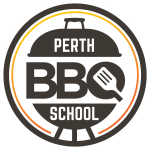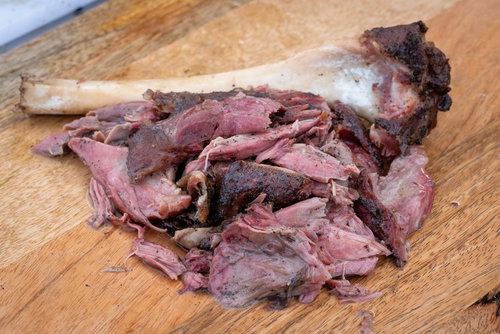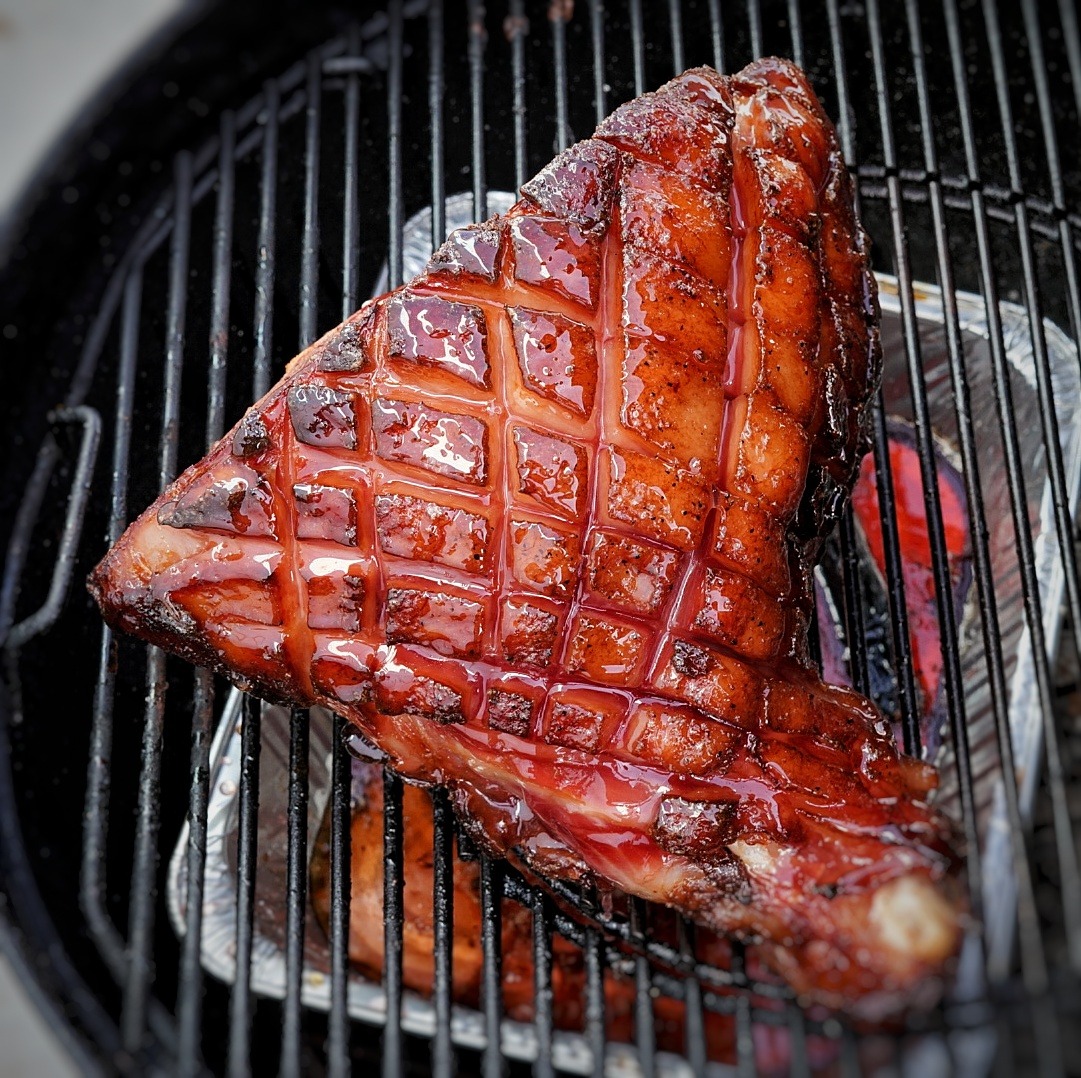
Beef cheeks are easily one of my favourite cuts to smoke – when treated right they are delicious, sticky, gooey, gelatinous nuggets of beef. Today I’ll take you through my process for amazing cheeks: the 3-3-1 method, smoke/boat/wrap.
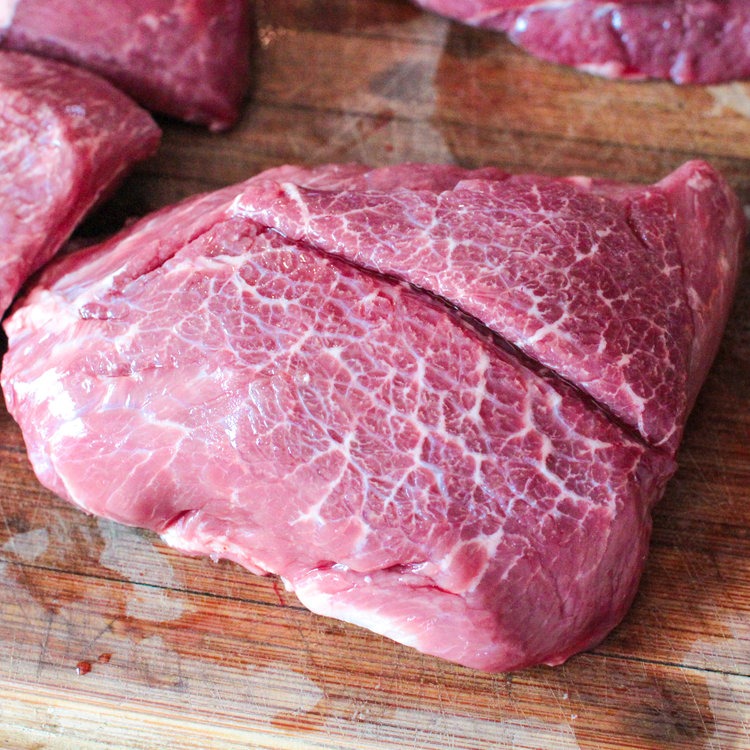
The average beef cheek weighs in at around 200 grams which for a low and slow smoking cut is very much on the small side; however beef cheeks have a secret weapon against drying out: collagen.
If you’ve ever enjoyed great beef cheeks you will already be familiar with the stickiness that is their signature; this is a result of a thick seam of collagen that runs through the middle of the cheek. When taken to a high enough internal temperature, this collagen breaks down helping ensure moist meat and providing that signature stickiness that draws people towards this cut.
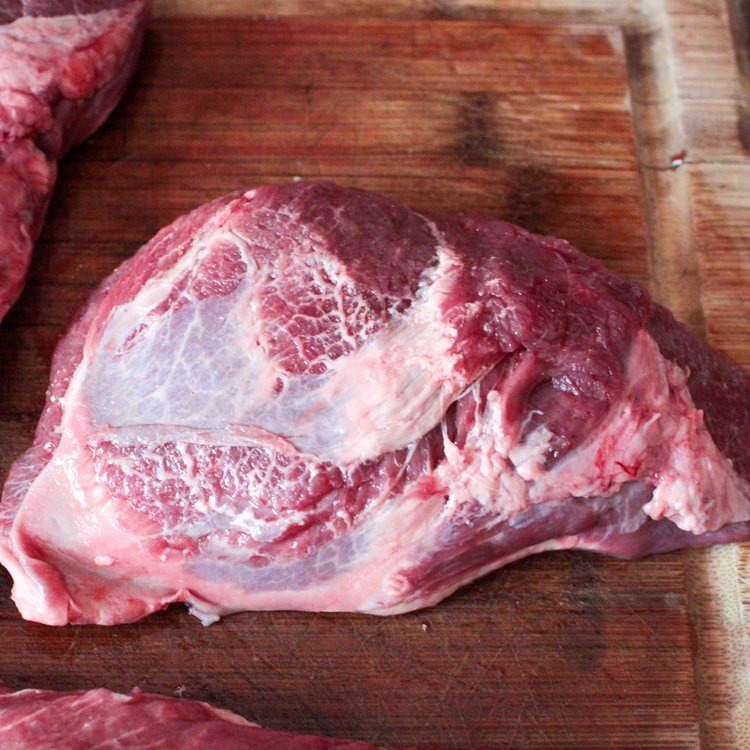
I don’t tend to trim a great deal from the cheeks, as given their size an aggressive trim will rid you of most of your meat; however I do like to get rid of any larger pieces of silver skin as pictured above as they can be chewy.
If you need help setting up your barbecue for low and slow for this cook don’t forget our other articles:
The Method:
With low and slow barbecue, the key is to not rely heavily on specific timeframes as smoked meats can vary substantially from one cook to the next due to anything from: ambient temperatures, fat content, shape, type of smoker and all manner of other reasons.
However having smoked beef cheeks a number of times now I have found this method to be somewhat consistent in timeframe but will accompany with temperature guidelines also before I get an angry email when the cheeks take you twice as long because the barbecue gods were not smiling down upon you that day.
Set up your smoker/barbecue for around 275f (135c) – variance in smoker temp is fine.
Then we will apply the following method:
- 3 hours smoked – or around 165f internal temp.
- 3 hours boated with liquid
- 1 hour fully wrapped until probe tender (205f-210f approx.)
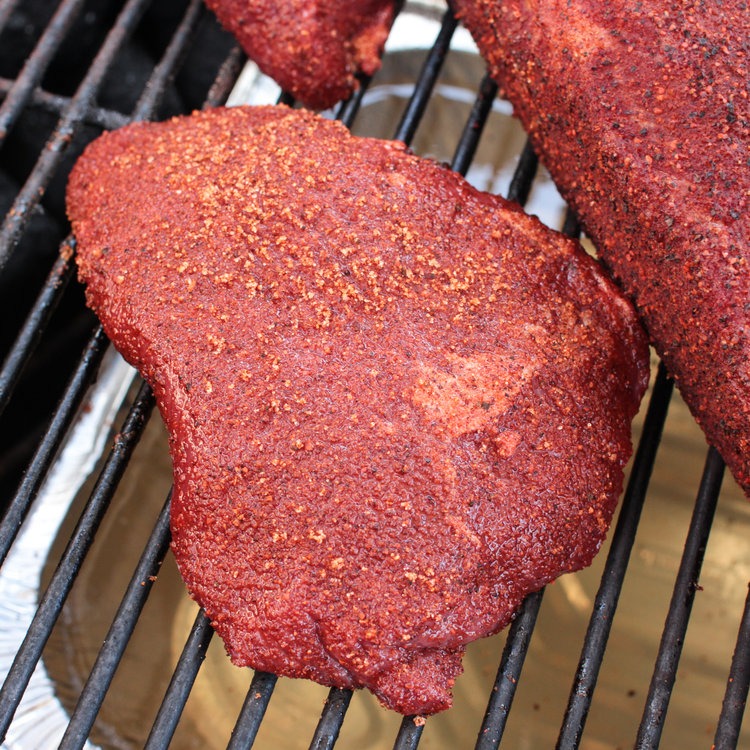
Smoke:
After trimming, rub your cheeks with your choice of barbecue rub.
When it comes to beef I am typically a big fan of savoury – salt and pepper heavy with not much else. However beef cheeks do quite well with a bit of sweet due to the richness from the fat and collagen.
Perth BBQ School’s Barbecue 101 rub would work well for the sweeter, paprika based style American rub, or our Ruckus rub for the more traditional savoury style. The above cheeks were rubbed with Meatchurch Bacon BBQ for a sweet smokey flavour.
Place the cheeks in the smoker indirect, running at around 275f – variance in temps with barbecues is to be expected so don’t freak out, I would be happy with anything from 250f to 300f as a standard range, and even a little further outside of that would not cause concern for alarm.
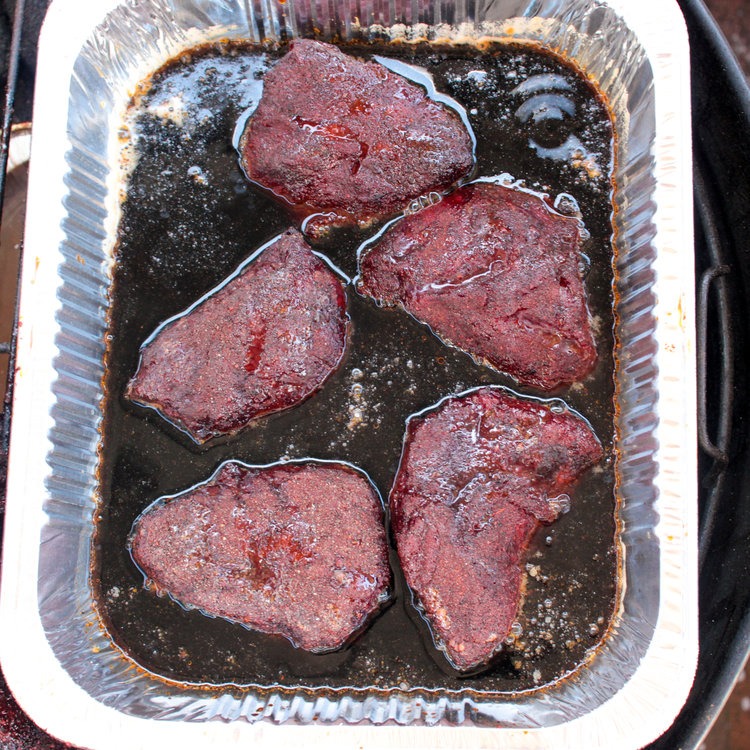
Boat:
3 hours after placing the cheeks in the smoker, it’s time to boat them.
Boating typically involves either alfoil or a tray to submerge the bottom half of a protein – this speeds up the cook while also providing liquid for moisture retention and a part-braise; however by keeping the top half uncovered we also still retain bark on top.
Ideally the cheeks should be around 165f by this point – if they are are more than 10f below this you could consider keeping them in for longer, however if you are happy with the bark so far you can proceed with the boat regardless.
You can use any liquid you like for the boat – stout beer is my go-to for boating along with a bit of sweetness like treacle, honey or brown sugar.
The above boat is two bottles of Nail Oatmeal Stout and a cup of treacle.
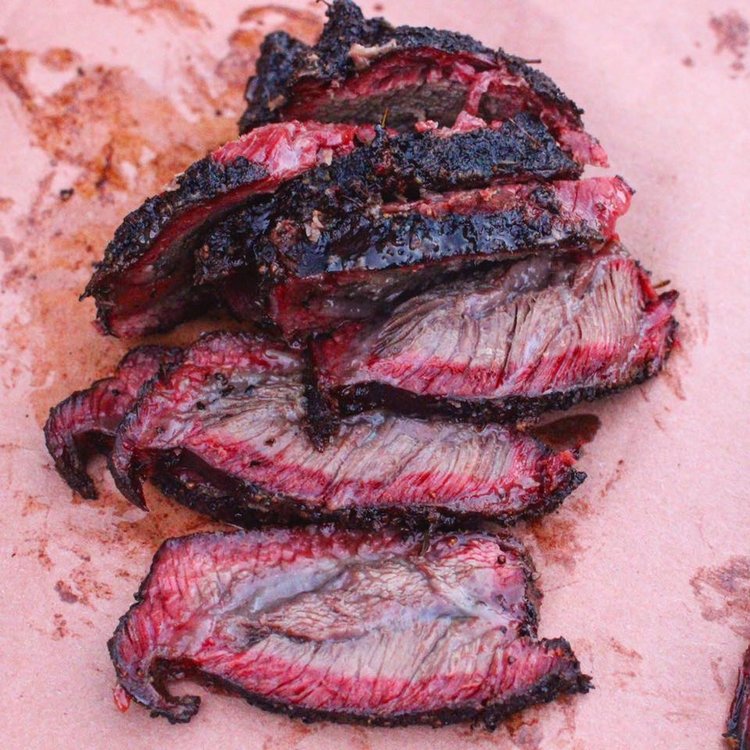
(Note: you can see in the slice the collagen seam is present yet has broken down into that gooey goodness we are chasing)
The seam of collagen running through the middle of the cheek is what makes it amazing, however if you’re not careful it can also be its downfall.
When assessing whether any low and slow cut is done the final test should be for probe tenderness beyond just aiming for a target internal temperature.
To get beef cheeks to that final tenderness test I have found more often than not we need to wrap and capture all the steam from our liquid to get over that final hurdle and breakdown that collagen seam. If not broken down it will be like a rubber band wrapped in beef.
Simply cover your tray with foil to capture that steam and leave for an hour.
Because of that collagen seam I have found the final internal temperature for beef cheeks can often be quite high, around 205f-210f. Be wary when probing for tenderness as often the meat can feel quite tender before that collagen has fully broken down.
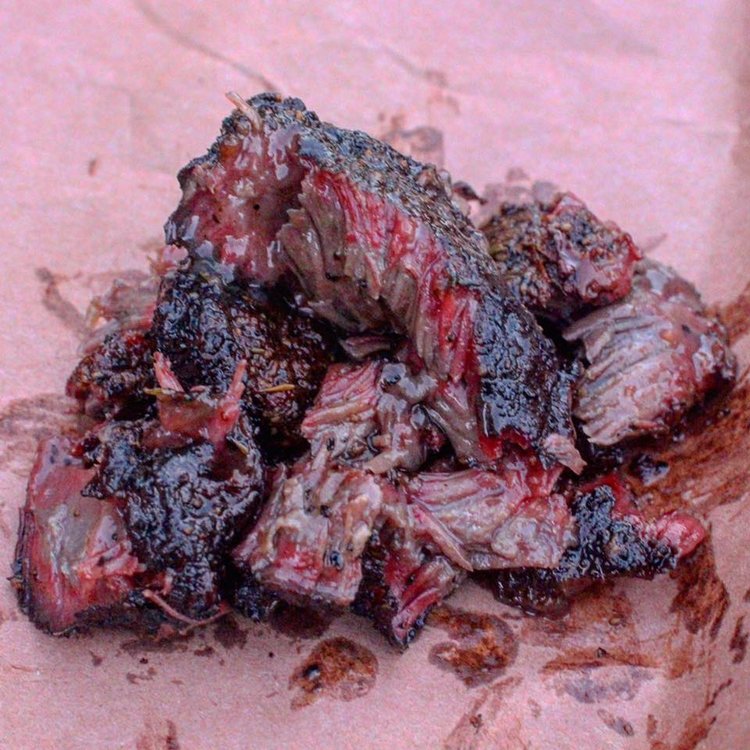
When the cheeks are done you can typically serve them sliced or pulled – either way they will be amazing.
Serve them however you please but for me tacos is by far the best application for these sticky nuggets of deliciousness.
Note: if you do slice your beef cheeks and find the collagen has not broken down yet, simply return them back to the liquid for a little longer.
Enjoy!
